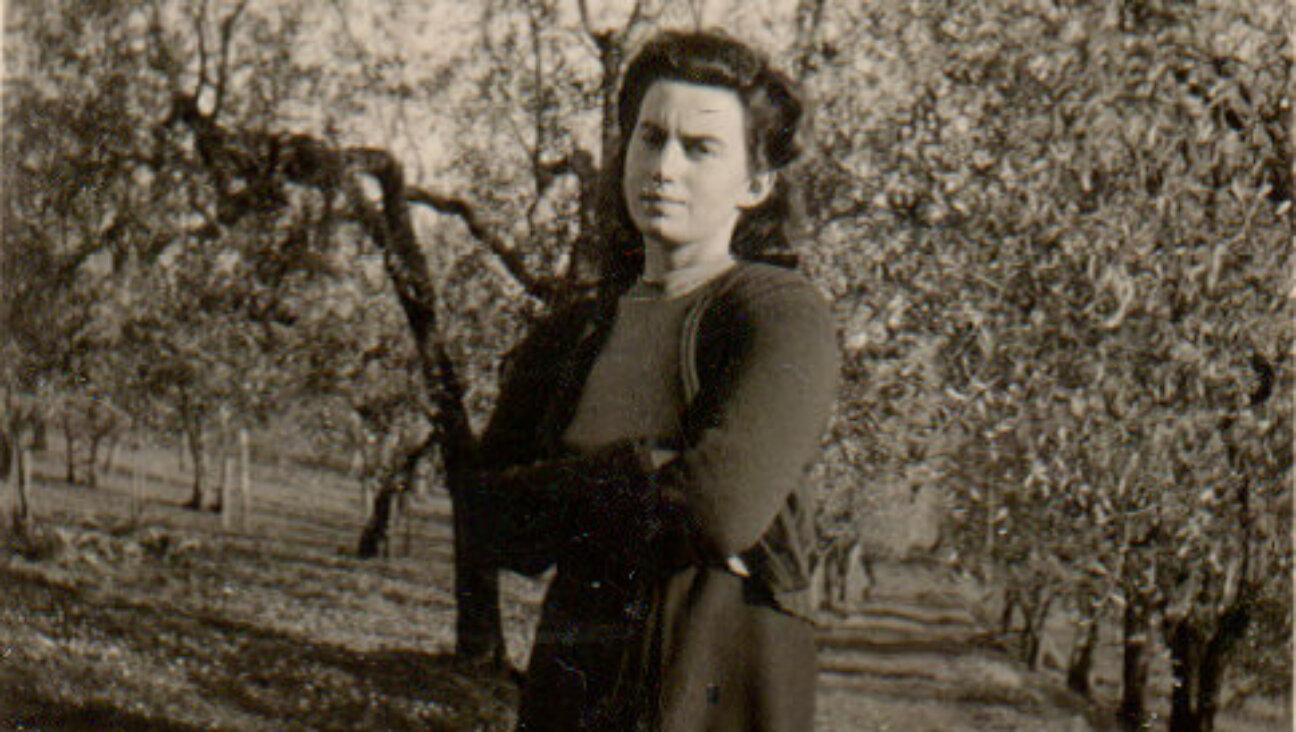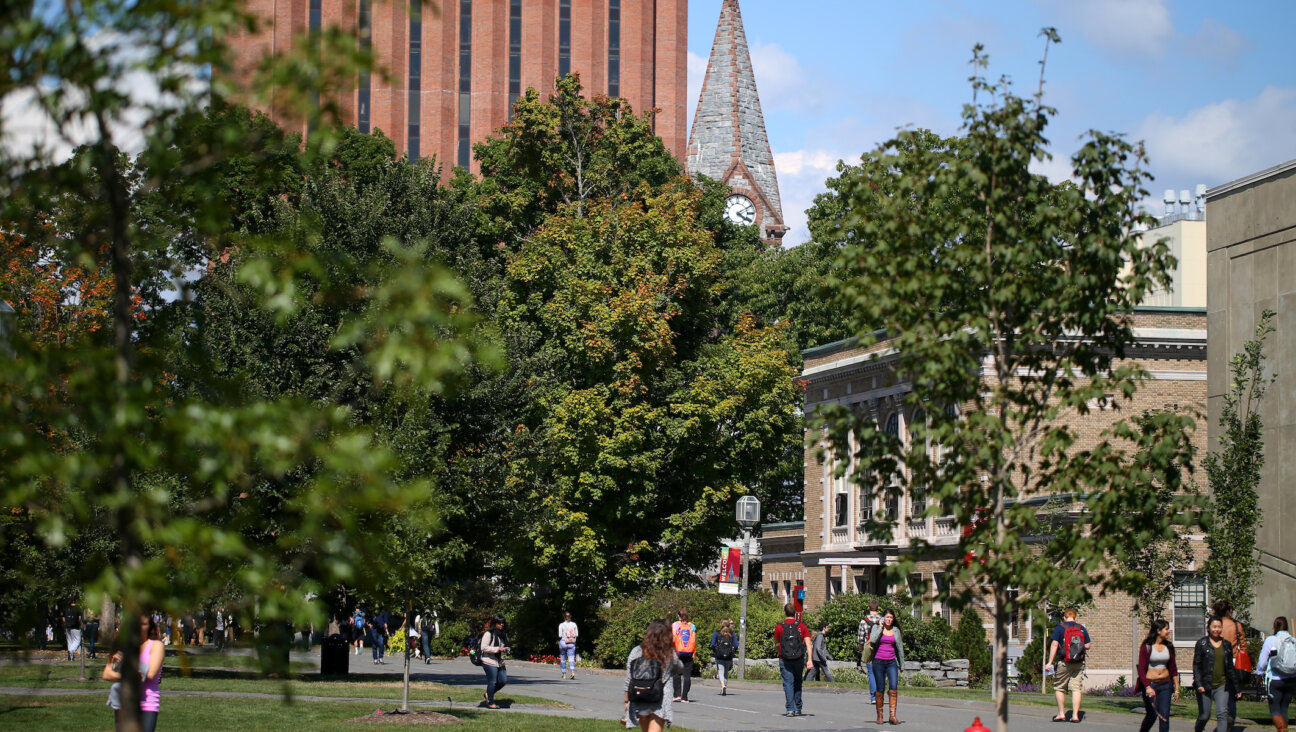ROOFTOP RENAISSANCE
251 West 100th Street, New York, N.Y., 212-865-0600.
Scribblers on the Roof:
Contemporary American Jewish Fiction
Edited by Melvin Jules Bukiet
and David G. Roskies
Persea Books, 352 pages, $15.95.
* * *|
At the turn of the past century, New York City’s Lower East Side was more crowded than Calcutta, and out of that tenement squalor came an astonishing number of Yiddish writers and dramatists. Granted, most of the newly arrived immigrants were busy with the business of making a living — in the newly emerging garment industry or in various other small trades — but the extraordinary thing about these people, bone tired after a long workday, was their addiction to culture, from the high-brow lectures on Darwinism and socialism to the melodramatic, often boisterous Yiddish theater. The result was a culture fairly bursting at its seams, one that knew full well that the English-language lessons offered up at the Educational Alliance building would simultaneously allow its children access into a larger America and sound a death knell for the Yiddish-speaking ethos they so loved.
Flash forward to l999 and the Upper West Side, an area of some 3 square miles that rivals, if not surpasses, the heyday of the Lower East Side for cultural institutions — and, of course, for writers. The adult education committee of Congregation Ansche Chesed (located at West 100th Street and West End Avenue) came up with what it thought would be a nice program to fill up the empty spaces in the summer cultural calendar: writers reading, alfresco, on the roof of the synagogue. “Scribblers on the Roof” seemed to be the perfect title for what became a wildly popular event, one that featured a wide range of American Jewish writers. Some were known commodities, others largely unfamiliar names, but, taken together, the “Scribblers on the Roof” made for first-rate evenings. People looked forward to them because what remained constant, week after week and year after year, was the high quality of the readers and what they read.
Makers of anthologies engage in risky, often thankless work. Leave out a friend, and you soon discover that you have made a lifelong enemy. By contrast, include everyone, and the result will be a book that no printer could bind and that no publisher would put under contract. The 20 pieces included by editors Melvin Jules Bukiet and David Roskies in this “Scribblers on the Roof” anthology run the gamut from A (Pearl Abraham) to S (Aryeh Lev Stollman), and from already established writers such as Cynthia Ozick, Steve Stern and Max Apple to representatives of the “emerging writer” generation: Jon Papernick, Jonathan Rosen and, perhaps the most promising of the bunch, Dara Horn.
With the exception of two stories set in Israel (Papernick’s “An Unwelcome Guest” and Stollman’s “Mr. Mitochondria”) and Ken Kalfus’s “Pu-239 and Other Russian Fantasies” (set in present-day Russia), the fictions take place in America, and often in Manhattan. Among the many occasions to say “Mazel Tov” are Ozick’s “Stone,” a story about a statue of Mohammed that has not been republished since its initial appearance in 1957; the fact that Norma Rosen and her son, Jonathan, both have selections in the anthology, and a reminder that Steve Stern was the first scribbler to read on Ansche Chesed’s roof.
Nonetheless, “Scribblers on the Roof” must make its way into the literary world as more than an elaborate way of celebrating an Upper West Side landmark and the readings hosted by a synagogue. What Bukiet’s introduction promises is an anthology that puts the best contemporary American Jewish writing between covers — not only stories or sections of novels with overt Jewish content, but also stories that demonstrate the truth of a quip by the late Irving Howe about Jewish literature being easy to recognize but hard to define; indeed, in this anthology, Kalfus’s nightmarish tale about a nuclear disaster in Russia, with nothing explicitly “Jewish” about its content, is allowed to coexist with a selection from Rosen’s “Joy Comes in the Morning,” about the travails of a female rabbi, and Sonia Pilcer’s “Paskudnyak,” a story about children of Holocaust survivors.
Other stories seek out their own imaginative territory. Take, for example, the eye-catching opening lines of Janice Eidus’s “Elvis, Axl, and Me”: “I met Elvis for the first time in the deli across the street from the elevated line on White Plains and Pelham Parkway in the Bronx…. I could tell it was him right away, even though he was dressed up as a Hasidic Jew.” From the popular culture of Elvis sightings and pop star worship, Eidus fashions a very contemporary — and I would add, very American Jewish — story that yokes together disparate elements into a satisfying whole. Apple’s “The Eighth Day,” a fall-down funny story about circumcision, and Abraham’s “The Seven Fat Brides,” an ambitious remodeling of a parable by Rabbi Nachman of Bratslav, are also wonderful — this despite the enormous differences in attitude and execution.
Finally, a few words about the editors. Bukiet’s introduction is pure Bukiet: out to shock and out to get as quickly to the bottom line as possible. “Jews are good at two things: being killed and writing about it.” That’s not how my capsule Jewish history would go, but Bukiet, as always, makes his case. Roskies comes off as a more temperate fellow, especially when he falls into remembrances of his Montreal childhood and emphasizes what has come to be known as the “place of place.” Manhattan turned out to be that place — for him, for Bukiet, for the members of Congregation Ansche Chesed and for the 20 writers we meet between the pages of “Scribblers on the Roof.”
Sanford Pinsker is an emeritus professor at Franklin & Marshall. He currently lives in South Florida, far from the roofs of Manhattan.
On Sunday, June 11, Congregation Ansche Chesed will host a book party for ‘Scribblers on the Roof.’ Open to the public from 6 p.m. to 8 p.m.
The Forward is free to read, but it isn’t free to produce

I hope you appreciated this article. Before you go, I’d like to ask you to please support the Forward.
Now more than ever, American Jews need independent news they can trust, with reporting driven by truth, not ideology. We serve you, not any ideological agenda.
At a time when other newsrooms are closing or cutting back, the Forward has removed its paywall and invested additional resources to report on the ground from Israel and around the U.S. on the impact of the war, rising antisemitism and polarized discourse.
This is a great time to support independent Jewish journalism you rely on. Make a gift today!
— Rachel Fishman Feddersen, Publisher and CEO
Support our mission to tell the Jewish story fully and fairly.
Most Popular
- 1

Fast Forward Ye debuts ‘Heil Hitler’ music video that includes a sample of a Hitler speech
- 2

Opinion It looks like Israel totally underestimated Trump
- 3

Culture Cardinals are Catholic, not Jewish — so why do they all wear yarmulkes?
- 4

Fast Forward Student suspended for ‘F— the Jews’ video defends himself on antisemitic podcast
In Case You Missed It
-

Culture How one Jewish woman fought the Nazis — and helped found a new Italian republic
-

Opinion It looks like Israel totally underestimated Trump
-

Fast Forward Betar ‘almost exclusively triggered’ former student’s detention, judge says
-

Fast Forward ‘Honey, he’s had enough of you’: Trump’s Middle East moves increasingly appear to sideline Israel
-
Shop the Forward Store
100% of profits support our journalism
Republish This Story
Please read before republishing
We’re happy to make this story available to republish for free, unless it originated with JTA, Haaretz or another publication (as indicated on the article) and as long as you follow our guidelines.
You must comply with the following:
- Credit the Forward
- Retain our pixel
- Preserve our canonical link in Google search
- Add a noindex tag in Google search
See our full guidelines for more information, and this guide for detail about canonical URLs.
To republish, copy the HTML by clicking on the yellow button to the right; it includes our tracking pixel, all paragraph styles and hyperlinks, the author byline and credit to the Forward. It does not include images; to avoid copyright violations, you must add them manually, following our guidelines. Please email us at [email protected], subject line “republish,” with any questions or to let us know what stories you’re picking up.














